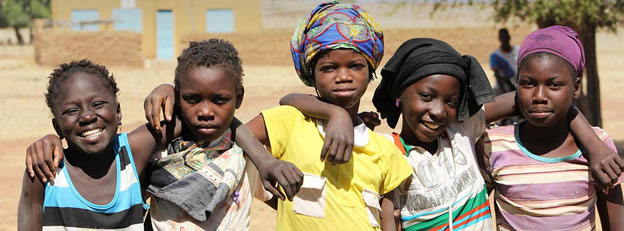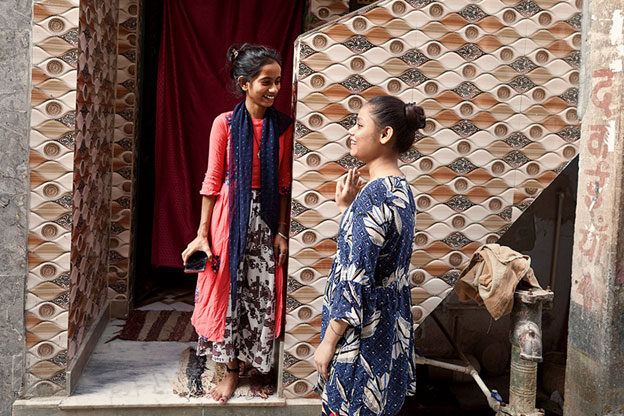Effective International Aid Depends on the Application of Girl-Centered Design

WASHINGTON DC, Oct 09 (IPS) - In a year that is rapidly becoming the costliest on record for climate-related disasters, the International Day of the Girl Child appeals to the global community for greater investments for and with adolescent girls.
https://www.un.org/en/observances/girl-child-day
Mounting evidence continues to show that the wellbeing of our households, our communities, and our world, especially amidst climate change, hinges on how seriously we take this call-to-action for half of the world’s population.
Protecting the rights of girls is key to achieving the Sustainable Development Goals. The Coalition for Adolescent Girls believes this prioritization of girls’ rights is all the more urgent among those who live in underserved and traditionally marginalized communities, many of which sit at the crossroads of poverty and climate fragility.
It is estimated that 80 percent of those displaced by climate-related disasters are women and girls. In the wake of cyclones, wildfires, floods, and earthquakes, adolescent girls have an even harder time accessing services and are often forced to forage for basic needs.
A direct correlation exists between natural disaster (climate-related or otherwise), girls’ inequitable access to education, skills training, and health and wellbeing supports, and increased exposure to sexual and gender-based violence.

Further, the breakdown in family and community, as well as the loss of a key information and knowledge resources – namely, school or other learning centers – exposes girls to exploitative behaviors and multidimensional and intersecting vulnerabilities.
Thus, the notion of disaster preparedness and disaster response must evolve to include girl-centered protection solutions to reduce these increased risks and their ripple effect on larger social and economic development goals.
The recent earthquakes in Turkey, Syria, and Morocco have seen unprecedented levels of devastation, both in terms of human life and the infrastructure necessary for accessing public services and ensuring protection from sexual exploitation, abuse, and violence.
In the southeastern provinces of Turkey alone, 9.1 million people were affected by the earthquake there, 3 million displaced, and nearly 300,000 buildings were destroyed. Among this wreckage, an estimated 320,000 people or more continue to live in temporary shelters.
Initial reports observe that for adolescent girls there has been significant increases in domestic care and responsibilities, domestic abuse, sexual and gender-based violence, and child marriage along with reduced enrollment rates in school.
Committing to Girl-Centered Design
Girl-centered design is one protective and pro-active approach to finding new solutions to the challenges that international humanitarian and development sector practitioners struggle to address at scale.
This process thinks about how spaces, programs, and activities can be developed for and with girls based on child safety protocols and girl-led participation. It is applied to ensure that all girls, especially the most underserved, are recognized and engaged.
In Pazarc?k, and Antakya, Turkey—areas hardest hit by the February earthquake—adolescent girls, and their families, still live in temporary shelters. Several of these girls were asked recently, “if you oversaw international aid, what would you do differently?”
“I would have done something to meet the self-care and clothing needs of the girls here. Then, the girls were cared for, I would send them to school,” said one 14-year-old from Pazarc?k. Adds a 13-year-old from the same area, “There could have been classes. There could have been information for us. There is nothing here.”
Their counterparts in Antakya talk about music, painting, dance, and sports. One 13-year-old says these creative activities would not only occupy girls, but also make them “happy.” One 14-year-old girl states, “I would make girls feel valuable. I would find out what girls are interested in and organize activities to engage them.”
Recent targeted research by Suna’n?n K?zlar? cites that girls spend the majority of their waking hours “pacing” and “waiting,” or else occupied with minding younger siblings or helping their mothers with household chores. Many girls yearn for and remark on the absence of “fun.”
Creating the Spaces for Girls to Occupy
With additional evidence on the intersection of wellbeing with outdoor activities, or the powerful learning and healing that occurs with ensuring girls’ right to play, there is a collective cry for doing better by them. Shelters should be constructed to include safe outdoor spaces for girls to play, strengthen the availability of the kinds of information they need, and provide access to basic services that support healthier prospects for their immediate and future needs.
To date, when such spaces or services are available, they are used predominantly by boys and men.
Adolescent girls inherently understand what it means to be a girl, to feel safe (or not), and to be valued as equals (or not). For the girls in Pazarc?k and Antakya, investing for and with them means not only applying girl-centered design to expand the physical safe and green spaces in which they can learn, play and grow, but also the decision-making spaces where their voices and ideas can be heard and taken seriously.
And while there are some welcome signs in this direction, it is not enough. If prioritized, girl-centered design and girl-led solutions before, during and after disaster may reap the results that have heretofore eluded us.
Amy West is co-lead of the Adolescent Girls and Young Women Initiative and principal international technical advisor at Education Development Center and Aysel Madra is a research coordinator at Suna’n?n K?zlar? (Suna’s Daughters). EDC. They are both active members in the Coalition for Adolescent Girls (CAG), a member-led and-driven organization dedicated to supporting, investing in, and improving the lives of adolescent girls.
IPS UN Bureau
Follow @IPSNewsUNBureau
Follow IPS News UN Bureau on Instagram
© Inter Press Service (2023) — All Rights Reserved. Original source: Inter Press Service
 Global Issues
Global Issues